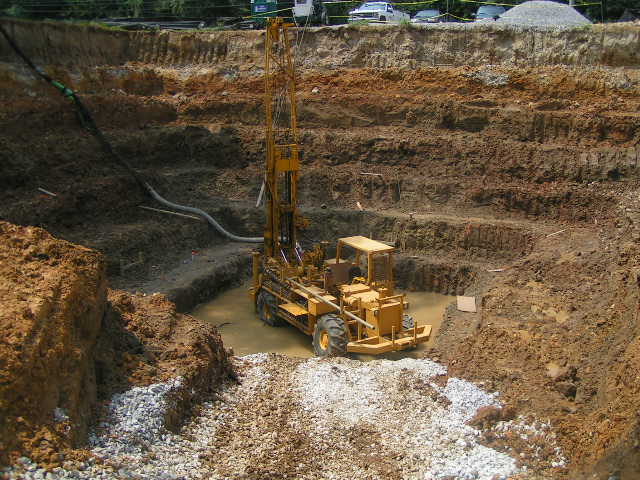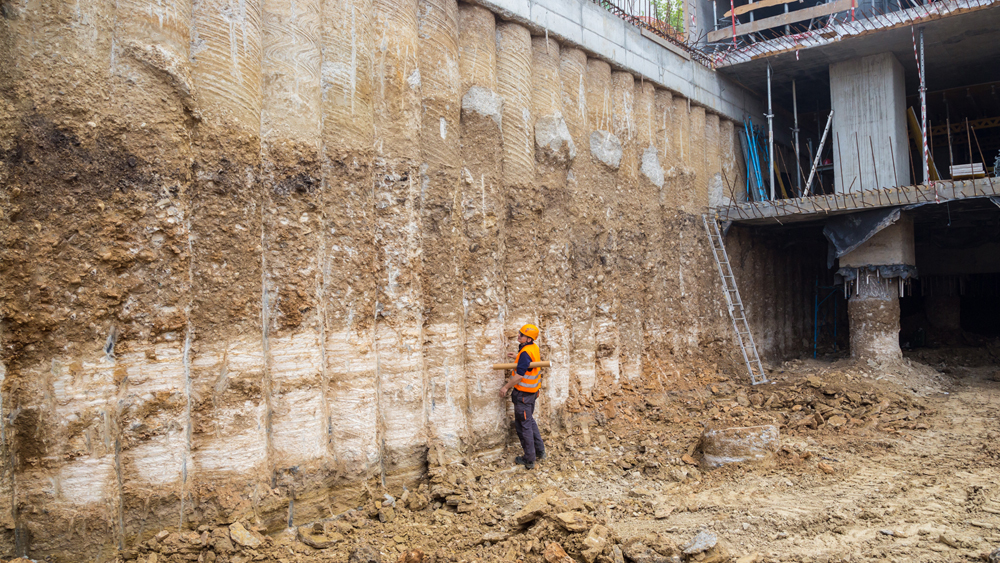Comprehending the Basics: Regarding Geotechnical Engineering in Modern Construction
Wiki Article
An Extensive Summary of Geotechnical Design Techniques and Their Impact on Modern Civil Design Projects
Geotechnical engineering offers as the backbone of modern-day civil engineering, giving important techniques that resolve the complexities of subsurface problems. The interplay of dirt evaluation, structure style, and cutting-edge innovations shapes the honesty and sustainability of facilities tasks.Significance of Geotechnical Design
Geotechnical engineering works as a crucial structure for civil design jobs, affecting the security and security of structures. This self-control concentrates on the actions of dirt and rock materials, supplying crucial understandings that assist the design and building and construction procedures. By understanding the interaction between the planet and crafted structures, geotechnical engineers can evaluate threats connected with ground problems, such as negotiation, incline security, and liquefaction.The significance of geotechnical design extends beyond simple structural honesty; it plays a crucial duty in ecological protection and sustainability. Correctly performed geotechnical evaluations make sure that jobs decrease their environmental impact and conform with regulative needs (all about geotechnical engineering). Moreover, geotechnical engineering is critical in site option, allowing engineers to determine suitable places for building and construction that mitigate potential hazards.
In enhancement, geotechnical engineering promotes advancement in civil engineering by advancing methods for ground improvement, foundation layout, and excavation. The technique's payments are vital in dealing with challenges posed by differing soil conditions, therefore facilitating secure and effective infrastructure growth. On the whole, the significance of geotechnical engineering is vital in guaranteeing that civil design tasks are not only practical yet also resilient against all-natural and synthetic misfortunes.
Trick Techniques in Geotechnical Design

An additional necessary method is soil stablizing, which involves changing dirt properties to enhance load-bearing capability or decrease negotiation. Approaches such as adding concrete, lime, or using geosynthetics are generally utilized to accomplish soil improvement.
Ground renovation strategies, consisting of dynamic compaction and vibro-replacement, are additionally crucial. These techniques aim to compress soft or loose dirts, improving their toughness and lowering liquefaction potential in seismic locations.
Keeping structures, such as sheet piles and dirt nailing, are utilized to support excavations and stop dirt movement. Incline stabilization strategies, consisting of drainage systems and preserving wall surfaces, are important for reducing landslide dangers.

Soil Evaluation and Examining Approaches
Efficient dirt analysis and testing techniques are crucial for comprehending the physical and chemical residential or commercial properties of soil, which directly influence engineering choices. An extensive analysis of soil characteristics is crucial for forecasting behavior under various loading problems and ecological influences.Typical dirt screening techniques include both field and lab methods. Field tests, such as the Requirement Infiltration Examination (SPT) and Cone Penetration Test (CPT), supply prompt understandings into soil stratification, strength, and thickness. These examinations aid engineers examine site problems successfully prior to more comprehensive laboratory evaluations.
Research laboratory screening techniques, such as Atterberg limitations, grain dimension circulation, and compaction examinations, are critical for establishing soil plasticity, dampness web content, and optimal compaction degrees. Advanced techniques like triaxial examinations and consolidated undrained (CU) tests use valuable data on shear toughness and reliable stress and anxiety criteria.
Chemical testing, including pH, electric conductivity, and natural web content evaluation, is likewise vital for understanding potential soil contamination and its effect on building and construction materials. Collectively, these soil analysis and testing methods create the foundation of notified decision-making in geotechnical engineering, guaranteeing the security and stability of contemporary civil design tasks.
Structure Layout Approaches
Structure style techniques are important in making sure the stability and long life of structures. These strategies can be classified into deep and superficial foundations, each fit to certain soil problems and packing situations. Superficial foundations, such as spread grounds and floor covering foundations, are typically utilized when surface area soils have adequate bearing ability. They disperse the tons over a larger area, minimizing negotiation dangers.In comparison, deep structures, including piles and pierced shafts, are utilized when surface area soils are weak or inadequate for supporting the structure. These structures transfer tons to much deeper, extra steady soil or rock layers, making them essential for skyscraper buildings and bridges in difficult geotechnical conditions.
Picking the appropriate structure design includes comprehensive geotechnical investigations, consisting of soil make-up, birthing capability, and groundwater conditions. Moreover, designers must take into consideration factors such as settlement, side tons, and prospective seismic task to ensure the foundation's efficiency with time.
Inevitably, a well-executed structure design is a critical aspect of civil engineering, directly affecting the security, longevity, and performance of structures. about geotechnical engineering. By aligning structure kinds with site-specific conditions, designers can successfully mitigate dangers associated with structure failure
Technologies Shaping Civil Design

Lasting products, such as high-performance concrete and recycled accumulations, are also getting traction, advertising environment-friendly practices while keeping architectural honesty. In addition, progressed geotechnical techniques, such as ground renovation and deep mixing techniques, are improving the security of structures in tough dirt conditions.
Furthermore, making use of drones and remote picking up innovation is enhancing site keeping an eye on and checking, providing real-time information that aids in managing construction development and safety and security. The implementation of ingenious building approaches, such as premade and modular construction, even more accelerates project timelines and decreases waste. Collectively, these innovations are not only transforming civil engineering techniques but likewise guaranteeing that modern facilities satisfies the demands of an expanding international population while resolving ecological problems.
Verdict
In verdict, geotechnical design techniques are important to the success of modern-day civil design jobs. geotechnical engineer description By utilizing these strategies, engineers can mitigate risks and add to the advancement of resistant urban settings, eventually fostering lasting growth and security in civil engineering techniques.Geotechnical design offers as the foundation of modern-day civil design, providing necessary methods that address the intricacies of subsurface problems.Geotechnical engineering serves as a crucial structure for civil engineering tasks, affecting the security and security of frameworks.In enhancement, geotechnical engineering fosters development in civil engineering by progressing strategies for ground renovation, foundation design, and excavation. Overall, the importance of geotechnical engineering is critical in making certain that civil design jobs are not just practical yet additionally resistant against synthetic and all-natural adversities.
In verdict, geotechnical engineering methods are indispensable to the success of modern-day civil design jobs.
Report this wiki page